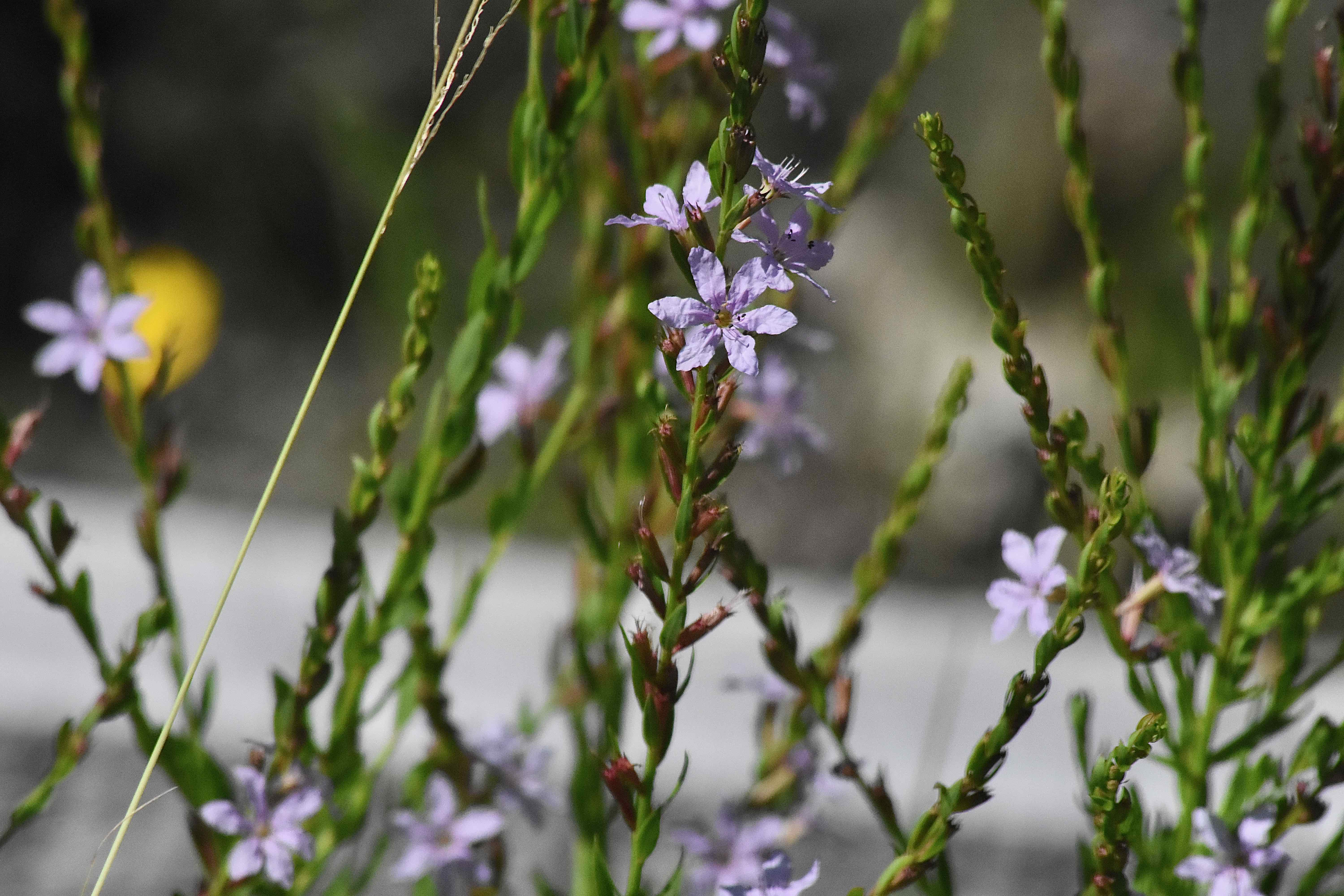
Winged loostrife, photographed at Acreage Pines Natural Area, Loxahatchee, Palm Beach County, in July 2016.
We’re old enough to remember the Patty Duke Show, the premise of which involved two teenaged cousins, one American, one European (English). Though genetically improbable if not impossible, they were identical in every way. So much so, you could “lose your mind,” as the show’s theme song informed us.
What does a mostly forgotten 60s sitcom have to do South Florida’s flora and fauna, you ask? Very loosely a native wildflower called winged loosestrife, Lythrum alatum, and its European cousin purple loosestrife, L. salicaria. The two are both beautiful and similar enough that it can difficult to distinguish one from the other. Sort of like the two cousins that Patty Duke played.
The difference is that purple loosestrive, which European settlers brought to North America centuries ago for its medicinal and nutritional properties, is an invasive menace to the point that it even crowds out its American cousin in places where the two coexist. Call it the evil twin.
The good news is that purple loosestrife isn’t likely to be found anywhere in Florida — it’s never been vouchered, or scientifically verified, growing wild in any of its 67 counties, while winged loosetrife can be found in most of the Sunshine State sans the Keys and some counties in the Panhandle.
There are, however, two other loosestrifes found in South Florida, wand loosestrife, L. lineare, and Florida loosestrife, L. flagellare, but both are rare, according to the Institute for Regional Conservation.
Winged loosestrife can be found throughout much of the eastern and central United States as far west as Montana, Wyoming and Colorado. It’s also found north of the border, in Ontario.
Loosetrife is a “subshrub” that can grow to two to three feet tall with a spread about the same. It can spread, forming patches via rhizomes, or underground stems.
The above-ground stems are herbaceous, or soft, but become woody toward the base as the plant ages. Stems are square and have wing-like tissue that are the inspiration for the name.
The leaves are simple and grow alternately along the stem, sometimes opposite each other as well. They are oval to oblong in shape and “entire,” meaning the edges are smooth — no serrations or lobes. They are sessile — attached directly to the stem without a petiole, or stalk. The leaves at the base of the plant are about two inches long, but become progressively smaller the higher up on the stem that they grow.
The flowers are pink to purple, with six petals forming a star-like pattern, six stepals, six stamen and six calyx. Each petal has a deep purple mid-vein. The petals are fused near the base, forming a cup. They appear singly or in pairs; summer is blooming season.
Winged loosestrife takes to wet to moist habitats — marshes, flatwoods, wet prairies, bogs and roadside ditches. It grows in full sun but tolerates some shade. It does not tolerate drought or salt.
It is cultivated and used in wildflower gardens and restorations.
As we noted above, the evil cousin, purple loosestrife, was important enough both nutritionally and medicinally to early European settlers that they brought the plant with them when they landed on North American shores. Our guy, winged loosestrife, is, by comparison, little used. The only mention we could find is by the Cherokee, who made an infusion from the plant to treat kidney ailments.
Other common names include blue waxwing, winged lythrum and angled purple loosestrife, the name referring to the stems’ square shape. Winged loosetrife is a member of Lythraceae, the family of loosestrifes.
Seen at: Accreage Pines Natural Area. Also at Pine Glades Natural Area and Quiet Waters Regional Park.



